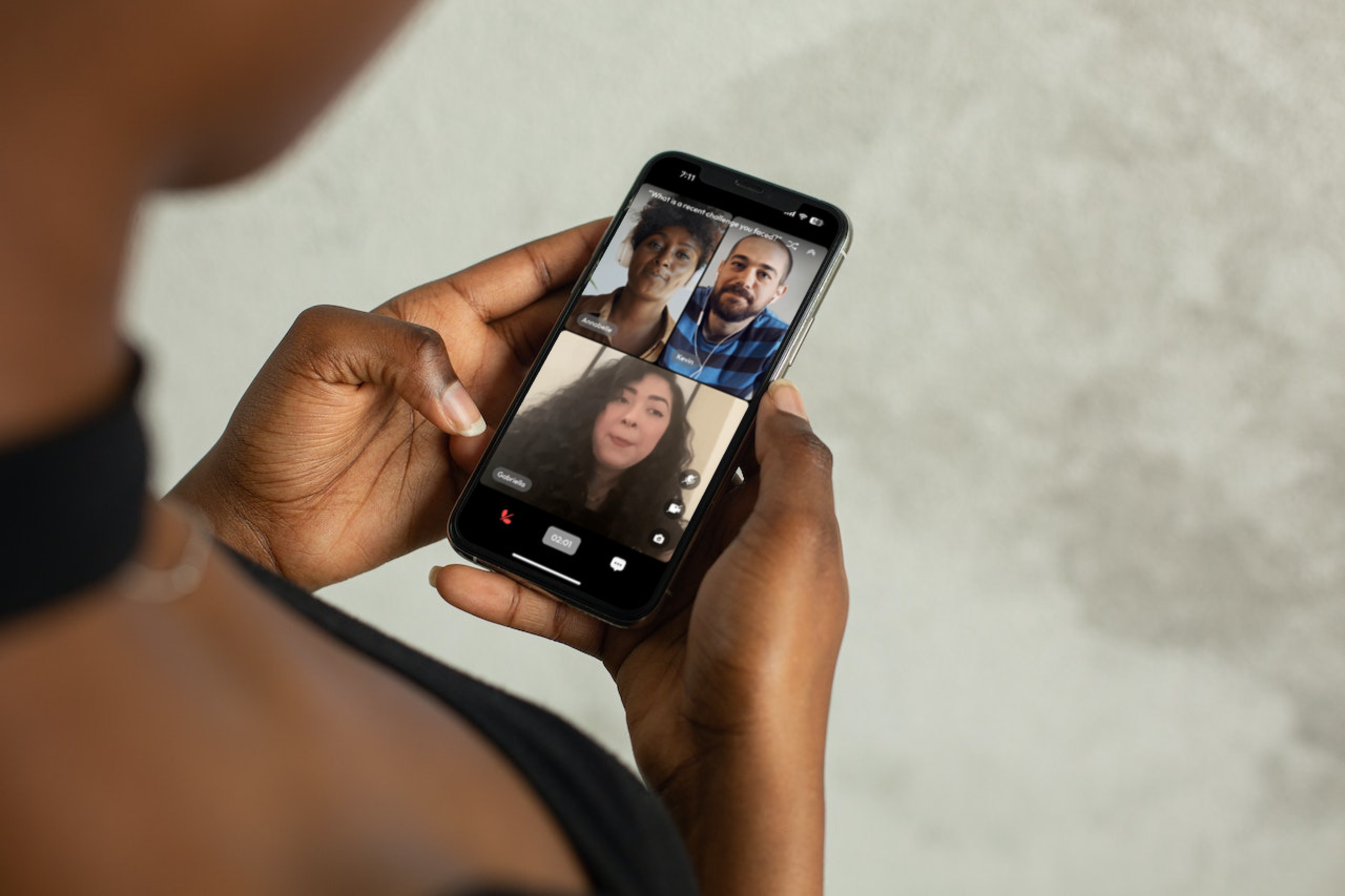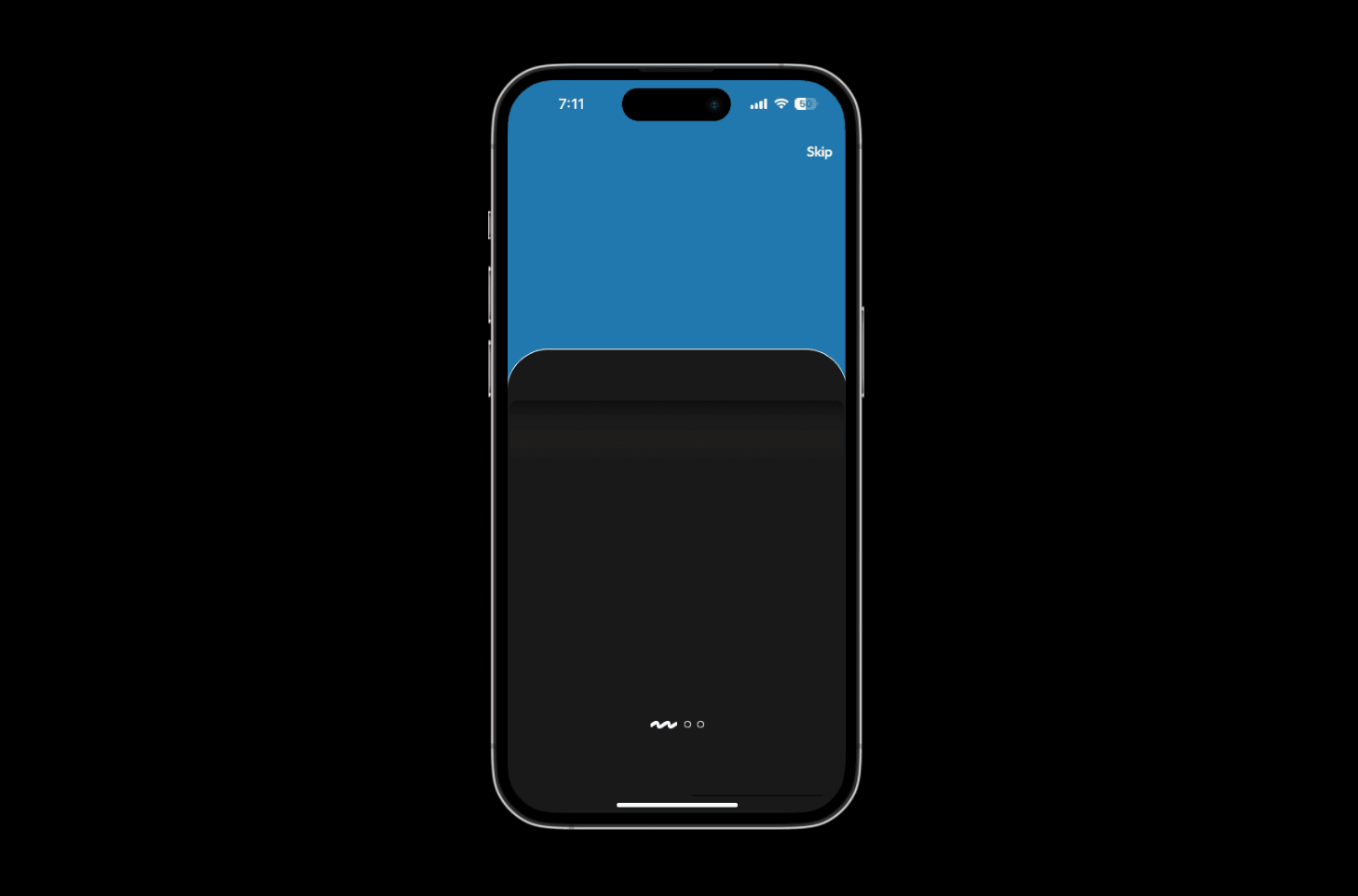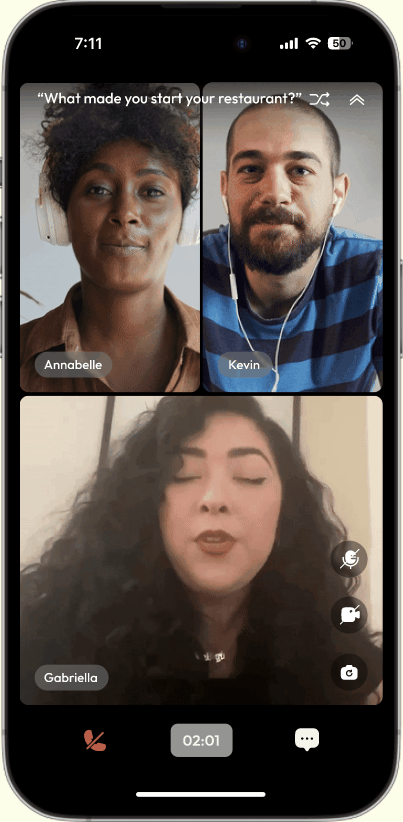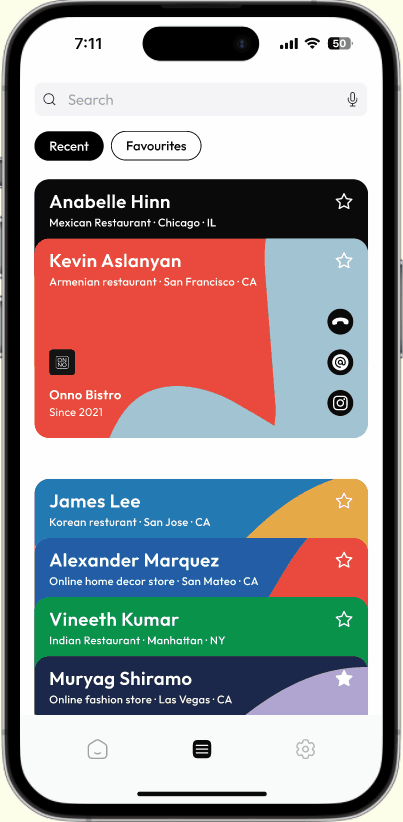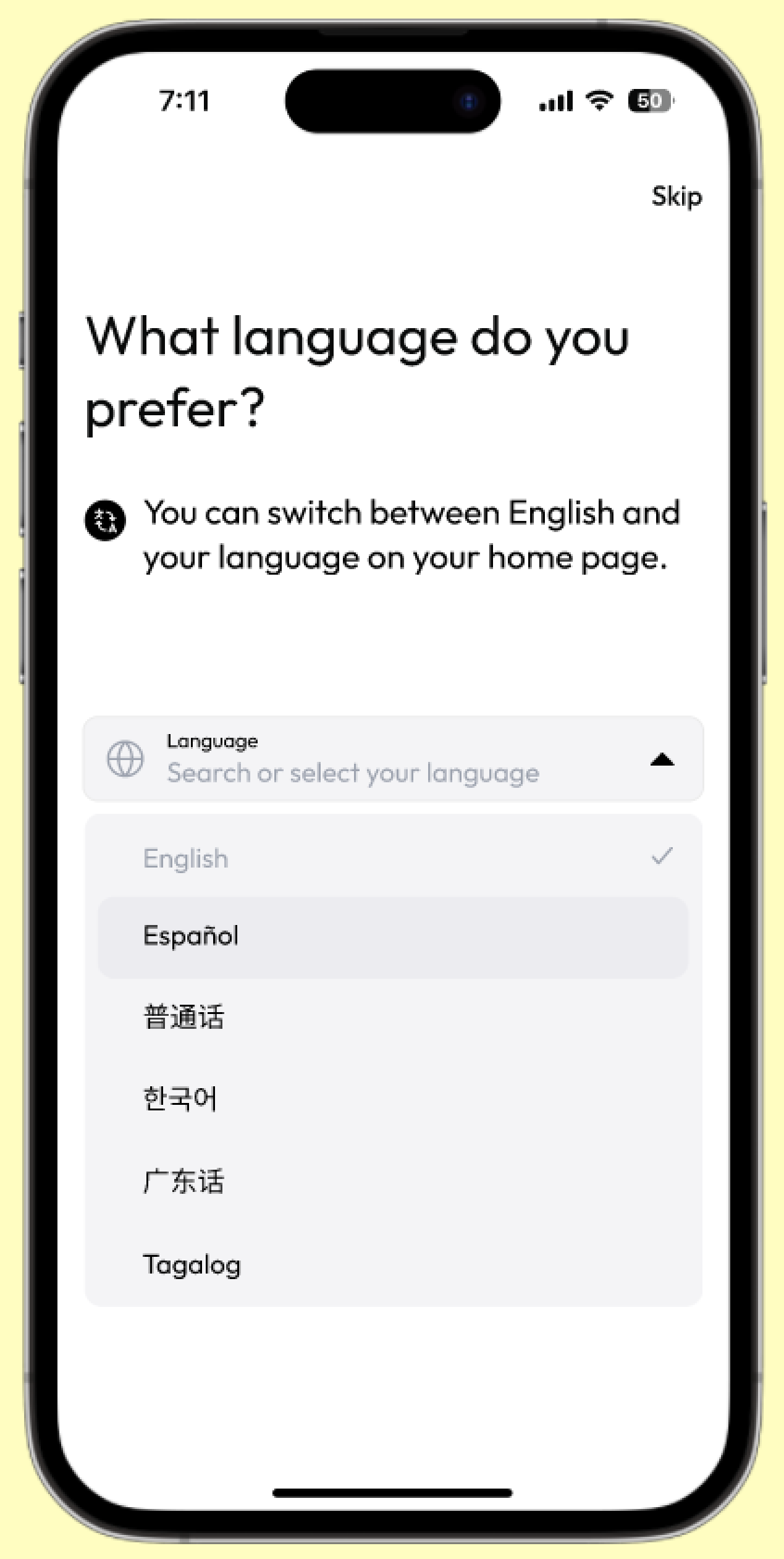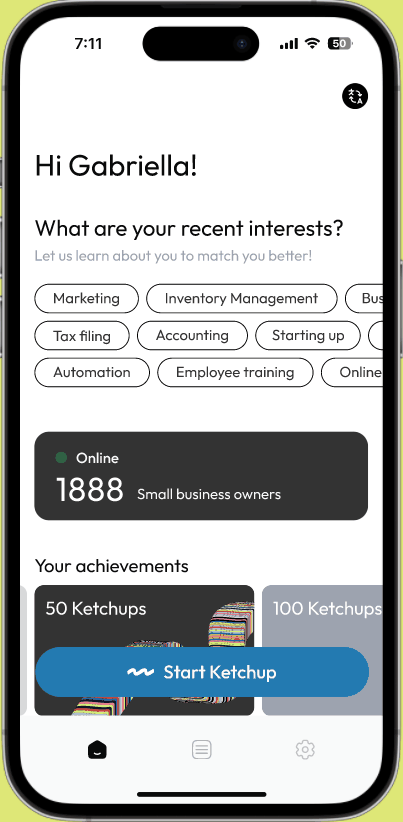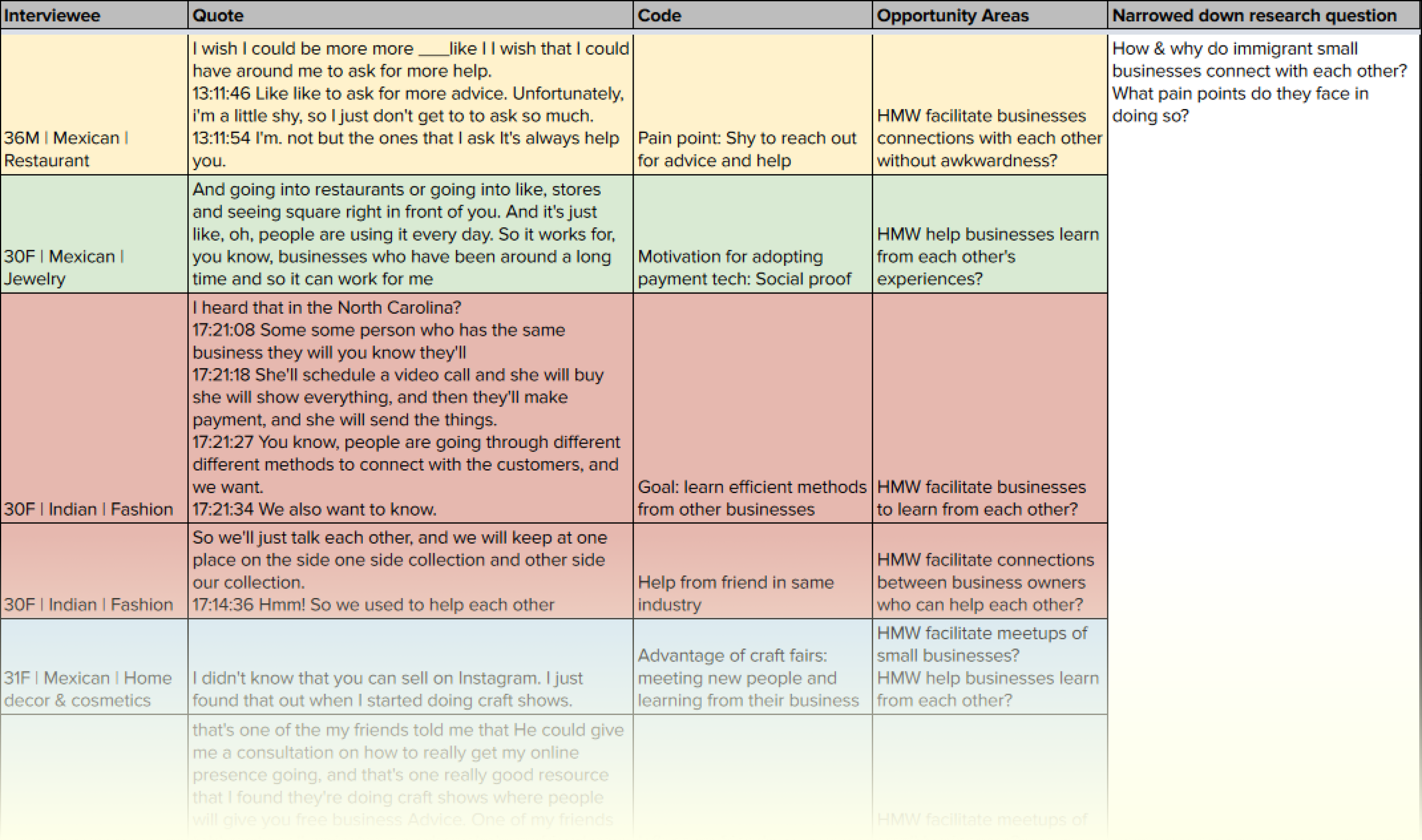Connecting immigrant small business owners
Takeaways
// Learned how team diversity can contribute to better design decisions
// Learned to quickly pivot and iterate multiple times based on regular feedback
Background
An explorative passion project born out of curiosity at seeing so many businesses shut down in San Francisco. The goal of the project was to design a product from scratch based on research insights while delving deep into visual and motion design.
Problem
Solution
How might we connect immigrant small business owners to each other to help them learn, grow and give back from each other’s experiences?
A mobile app that connects immigrant small business owners by matching them while constantly learning about their goals, interests, languages, and personal preferences.
My role
User research and synthesis
Conceptualization and prototyping
Jobs-to-be-done
Content design
Interaction and motion design
My team <3
Yuha Kim (Branding designer) • Blake Hudelson (Design guide) • Sonia Tiwari (Research guide)
Summary of problem and opportunity
Minority-owned businesses are most susceptible to disruption due to factors like:
Language barriers
Lack of education
Lack of funds
And the pandemic made this more evident.
“I opened a restaurant, so if somebody will ask me, ‘hey, how do you do it?’ I will be more than happy to help them, because I went through that.”
36M | Mexican | Restaurant in SF since 2021
Ketchup is designed with the vision that immigrant small business journeys will be more successful and delightful by sharing and learning from each other.
STEP 1
Create business card and voice intro
Business card colors represent user’s industry and time zone
Voice intros: No photos. No bias.
STEP 2
Get matched and Ketchup!
Ketchup also picks up keywords from intros to match based on user’s goals and interests
No awkwardness - plenty of icebreakers
Ketchup in groups of 3. More accountability. No scams.
We understand small business owners have no time. Spend just 20 mins to make 2 meaningful connections.
STEP 3
Build your network. Contact your connections any time later.
Mark your favourites
Language.
As someone running a business in the US, we understand English is as important as your native language. Quick switch between them as needed!
Progressive onboarding.
Constantly learning about user’s preferences to make meaningful connections
Meet more people of your gender?
Meet more people who speak your native language?
Your short term business goal?
Delight.
Playful informative rewards for milestones
Process
Process
Having seen so many shut shops around me in San Francisco, coupled with my background of having worked for small business products, it made me wonder how small businesses here thrived during the pandemic and how it may have affected them.
Did they pivot?
Did they embrace online sales channels in time?
Are they comfortable adopting technology?
.
How did this project start?
The initial broad research questions
How did small businesses deal with the pandemic? How comfortable are they adopting technology?
Desk research insights
“Minority owned businesses are more susceptible to disruption than white-owned businesses.”
Black owned businesses face problems of getting lesser loans sanctioned as compared to white owned. This has also led to black businesses getting into the mindset that they'll be denied funding anyway and so there is lesser motivation to apply.
Latinx immigrant businesses lag behind white businesses with respect to income because of barriers such as lack of education, wealth, their language ability and legal status.
Asian businesses face similar struggles as Latinx businesses but they relatively do better because of better education levels.
Sources:
Robert Fairlie. "COVID-19, Small Business Owners, and Racial Inequality". National Bureau of Economic Research. Dec 2020 (link)
Robert W. Fairlie. "The impact of COVID-19 on small business owners: Evidence of early-stage losses from the Aptil 2020 current population survey”. National Bureau of Economic Research. Jun 2020 (link)
60% of Latina owned businesses run in the retail, educational, health and personal services industries i.e. the industries which had most job losses/reduced work hours during the COVID-19 pandemic.
Sources:
Qingfang Wang. “Planning for an Inclusive Entrepreneurial Ecosystem: COVID-19 and Business Resilience in Underserved Communities” Journal of the American Planning Association, Sep 2022 (link)
Top reasons for why small businesses hesitate to adopt technology:
Mindset 1: Resistant to change
‘What I am doing is good enough, so I'd rather just stick with it’
Mindset 2: Cost-benefit analysis
‘All I can see is risk and short-term losses’
Mindset 3: Choice paralysis
‘It’s too hard to compare, understand and choose between all the options’
Sources:
“One step: Behavioural barriers to technology adoption amongst small businesses – and how to overcome them” by Xero, Nov 2021 (link)
I wanted to delve deeper into how factors like lack of education and language barriers could affect small businesses & their technology adoption and hence narrowed down the target audience:
Immigrant small business owners
Semi-structured in-depth interviews
5
Immigrant small business owners
3
3
3
3
Omnichannel
2
Online channel
Retail
2
Restaurants
Latinx
Females
2
2
Asian
Males
1 - 6 yrs
Age of businesses
Sneak peek into coding and synthesis
View the entire sheet here
Top themes and opportunities
“I learn from others’ experiences”
Theme noticed across 7 quotes from 4 participants
“I wish that I could have asked around for more help - to ask for more advice. Unfortunately, I'm a little shy, so I just don't get to ask so much. But the ones that I ask, they always help you.”
“I heard that in the North Carolina, someone who has the same business - she schedules a video call and shows everything, before payment and delivery. You know, people are going through different methods to connect with the customers, and we also want to know.”
36M | Mexican | Restaurant
35F | Indian | Fashion
“One of my friends told me to sell on Instagram - well she's my friend now, but I had met her at a craft show. And she sells candles. She has like over 10,000 followers, and i'm like how do I get to that?”
31F | Mexican | Home decor & cosmetics
“I need to upskill”
“We are not creative, you know. As you can see in Instagram, some people go with reels and lives. We are not ready for that yet.”
Theme noticed across 6 quotes from 3 participants
35F | Indian | Fashion
“I would love to have help, or like to have guidance with (automating social media marketing).”
31F | Mexican | Home decor & cosmetics
“I give back to the community”
Theme noticed across 5 quotes from 3 participants
“I opened a restaurant, so if somebody will ask me, ‘hey, how do you do it?’ I will be more happy to help them, because I went through that.”
36M | Mexican | Restaurant
“The booth fees can cost up to $200 in some for some events. So I want to be able to figure out with my business how to help other small businesses. I figured out in the Bay area, it's tough for small businesses to be able to sell at events like that.”
31F | Mexican | Home decor & cosmetics
Language barrier
“My wife’s a big part of (business registration). She was born here in America. So she understand more the language of paperwork than I do. English is my second language.”
36M | Mexican | Restaurant
“We usually work after (full-time) work also. Until well, one o'clock in the night, these things actually take so much time”
Lack of time
35F | Indian | Fashion
Opportunity area
How might we connect immigrant small business owners to each other so that they can learn, grow and give back from each other’s experiences?
Narrowed-down research question
How & why do immigrant small businesses connect with each other? What pain points do they face in doing so?
Disclaimer: Sample size was limited to 11 due to lack of budget and reach
60% want to build their network for help/advice in the future
50% said they will feel less lonely if they know other businesses who face similar problems
50% want to learn strategies from other businesses to apply to their own
40% said time is the biggest challenge that keeps them from connecting with other businesses
Core Jobs-To-Be-Done
I want to make connections so that I can reach out later for help or advice if required.
I want to connect with business owners in my industry so that I can learn about new strategies and methods.
I want to connect with other small business owners in my language so that it’s relatable and easy for me.
I want to connect with small business owners with mutual challenges so that I don’t feel like I’m alone in it
I want to spend as less time networking as possible so that I can focus on my business and family.
Discarded explorations
Design system
A sustaining community that supports itself
The key value that patrons derive from Ketchup is the relationships they form with and support they provide to each other. Over time, we can leverage data to study how these relationships are built and introduce nudges to incentivize sharing resources and support.
A business model with multiple sources of revenue
Large companies struggle to effectively market to small-business owners from minority communities due to lack of reach and understanding of their challenges. Ketchup can leverage its community of small business owners and data on their business goals, and monetize by pitching/recommending appropriate B2B tools and services who are willing to offer their products at discounted rates for small businesses.
Multiple use-cases validated through testing
Ketchup can evolve with the business owners’ changing needs by opening feedback channels with small-business owners and conducting regular validation testing on new needs and hypotheses

